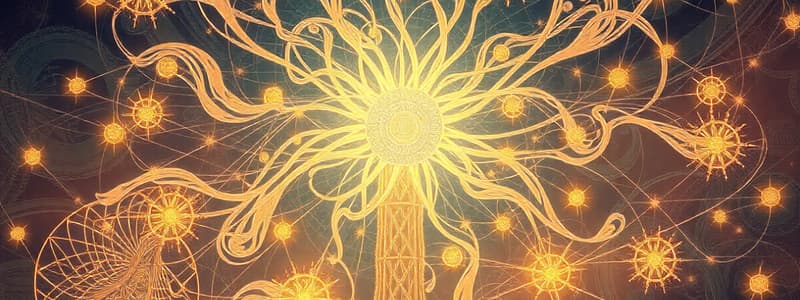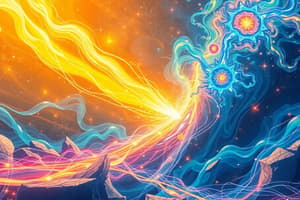Podcast
Questions and Answers
What is a key characteristic of a perpetual motion machine?
What is a key characteristic of a perpetual motion machine?
- It can run indefinitely without additional energy. (correct)
- It requires a constant external energy source.
- It can only run for a limited period.
- It transforms energy into heat loss continuously.
According to the principles of energy, what happens to energy when it is transformed or transferred?
According to the principles of energy, what happens to energy when it is transformed or transferred?
- It can only increase in quantity.
- It remains unchanged.
- It disappears completely.
- It can be converted into different forms. (correct)
Why is the creation of a perpetual motion machine considered impossible?
Why is the creation of a perpetual motion machine considered impossible?
- They require more energy than they can produce.
- They are too complex to successfully construct.
- They would violate the principles of energy conservation. (correct)
- There are no designs or concepts for such machines.
What fundamental principle does Leonardo da Vinci support regarding perpetual motion machines?
What fundamental principle does Leonardo da Vinci support regarding perpetual motion machines?
In the context of energy forms, how is energy best described?
In the context of energy forms, how is energy best described?
Flashcards
How does energy produce change?
How does energy produce change?
Energy can change the state or condition of a system.
What are the different forms of energy?
What are the different forms of energy?
Energy exists in various forms like light, heat, and mechanical energy.
How can energy be transferred or transformed?
How can energy be transferred or transformed?
Energy can be transferred from one object or system to another, or transform from one form to another.
What is a perpetual motion machine?
What is a perpetual motion machine?
Signup and view all the flashcards
Why are perpetual motion machines impossible?
Why are perpetual motion machines impossible?
Signup and view all the flashcards
Study Notes
Key Concepts
- Energy causes change in a system.
- Energy exists in different forms.
- Energy can be transferred or transformed.
- Physical quantities contribute to different energy forms.
Curricular Competencies
- Make observations to identify questions about the natural world.
- Use scientific knowledge to draw evidence-based conclusions.
- Develop and refine ideas.
Properties of Energy
- Perpetual motion machines are machines that supposedly run forever, but energy is never lost.
- Energy is transferred and transformed in perpetual motion machines.
- Energy is never lost, despite transformations.
Energy and Systems
- A system is anything under observation.
- Surroundings are everything outside the system.
- Universe = system + surroundings
Different Forms of Energy
- Kinetic energy is the energy of motion.
- Potential energy is stored energy, due to condition or position. Examples include:
- Chemical potential energy: Stored in chemical bonds (e.g., fossil fuels, fireflies).
- Gravitational potential energy: An object's stored energy due to its height relative to a reference point (e.g., a roller coaster at the top of a hill).
- Elastic potential energy: Stored in stretched or compressed objects (e.g., a rubber band, a trampoline).
- Radiant energy: electromagnetic waves that travel or 'radiate' from an energy source.
- Electrical kinetic energy: movement of electrons, often through conductors.
- Sound energy: vibrations that travel through substances in waves.
- Thermal energy: random movement of particles; often referred to as heat.
Studying That Suits You
Use AI to generate personalized quizzes and flashcards to suit your learning preferences.




